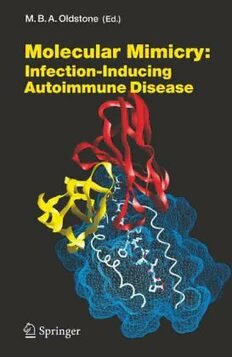
Molecular Mimicry: Infection Inducing Autoimmune Disease PDF
166 Pages·2005·2.087 MB·English
Most books are stored in the elastic cloud where traffic is expensive. For this reason, we have a limit on daily download.
Preview Molecular Mimicry: Infection Inducing Autoimmune Disease
Description:
The conceptual basis for molecular mimicry was first defined in the early 1980s when monoclonal antibodies against viruses were also shown to react with non-viral host protein; in this case, measles virus phosphoprotein cross-reacted with host cell cytokeratin, herpes simplex virus type 1 with host-cell vimentin and vaccinia virus with host-cell intermediate filaments. Following this discovery, others emerged, again at the clonal level, that T cell clones against proteins from a variety of infectious agents also reacted with host antigenic determinants. The clonal distinction was imperative for the initial definition of mimicry. At least 30 years prior to our initial description of molecular mimicry involving cross-reactions between numerous microbes, on the polyclonal antibody level, streptococcus was believed to react with renal glomeruli, heart and basal ganglia to account for the glomerulonephritis, heart and valvular disease and chorea, respectively. However, subsequent research showed that the nephritis was caused by immune complex deposits and the tissue damage they produced. Later, in 1990, the cross-reactivity of streptococcal antigen with myocardial antigens on a clonal level was uncovered. Hence, for both historical reasons and mechanistic understanding, it is best to provide evidence for cross-reactivity at the clonal level to prove that molecular mimicry exists.
See more
The list of books you might like
Most books are stored in the elastic cloud where traffic is expensive. For this reason, we have a limit on daily download.
